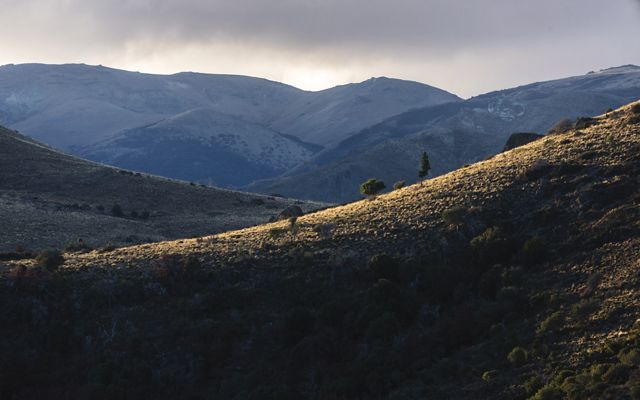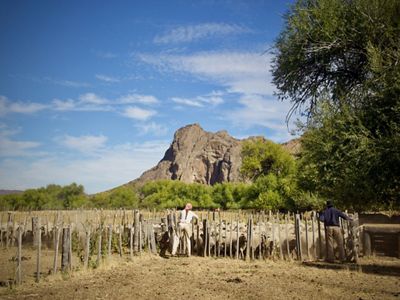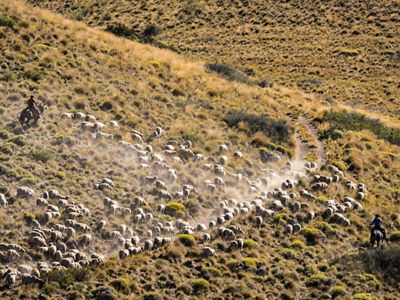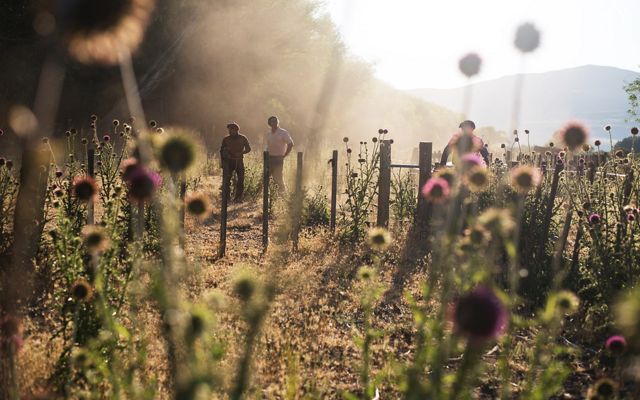Fortin Chacabuco: How sustainable grazing can save Patagonia's natural landscapes.
Tackling desertification in one of the last pristine environments on earth
Patagonia is a sparsely populated ecoregion at the southern end of South America. It stretches across approximately 190 million acres in Chile and Argentina. It is well-known for its natural, cultural, and economic importance to those countries, Latin America, and the world.
The major geological transformations that took place millions of years ago gave Patagonia its striking landscape, lakes, and rivers. The region is home to an incredible variety of wildlife and plants and the habitat of an incredible array of bird species, such as the Andean condor and the black-chested buzzard eagle.
Almost two-thirds of Patagonia is in Argentina, where it's surrounded by the Andes Mountains on one side and the Atlantic Ocean on the other. Tablelands, deserts, and steppes compose the landscape, making for stunning mountain scenery and the largest expanse of temperate grassland in South America.
TNC considers Patagonia one of Latin America's Iconic Places. Given its unique topography, it offers an opportunity to deliver high-impact, significant outcomes for biodiversity, climate, and sustainable development. But a serious problem haunts Patagonia: Desertification.
Today, 70 percent of the Patagonia steppe is suffering from different degrees of desertification. It erodes and degrades the soil, making it unable to sustain life. The over 100 years of unsustainable sheep-grazing has more than taken its toll. But despite these alarming numbers, Patagonia remains one of the last pristine environments on earth.
We need to find a balance between safeguarding livelihoods and a way of life and protecting the grasslands vital for our planet's health.


Fortin Chacabuco – Places We Protect
TNC understands that we must share the responsibility of working at a pace and at a scale that will make a difference and allow future generations to inherit a thriving, healthy planet. That is why we work on a 13,500-acre ranch called Fortin Chacabuco, where TNC highlights its sustainable grazing work in Patagonia and has obtained key conservation objectives. One such development is the applied research carried out to help protect ecosystems and their biodiversity, such as the social tuco-tuco, a neotropical rodent whose popular name comes from the "tuc-tuc" sound it makes while it excavates its burrows.
In 2016, Fortin Chacabuco was partly donated to TNC to become a pioneering open conservation ranch dedicated to developing, implementing, and disseminating sustainable, science-based grazing advances.
We pledged to restore and maintain the Patagonian grasslands' health, its soils, and water sources. We use science to find ways to make sheep grazing sustainable and rivers healthy and abundant. To get there, we are joining with the people that matter: ranchers, producers, local communities, researchers, and government.
TNC and the ranch itself gained the local community's support thanks to work initiated in 2016. Liaisons with researchers, scientists, and academic and educational establishments have become consolidated formal partnerships. Simultaneously, the ranch has become an open laboratory for applied research on multiple topics related to regenerative ranching and sustainable grazing in northern Patagonia.


Fortin Chacabuco is an asset with the potential to serve as a hub for the convergence of other similar efforts to combine ranching and conservation across Patagonia and other geographies.
Fortín is home to tens of science projects with some 40 scientists visiting the property regularly, working on topics such as freshwater table levels, soil condition, fire control, exotic species, pasture health, tuco-tuco habits and many more. We created a sustainable grazing standard for local ranchers and have become a meeting point for producers looking to protect their lands through science and private conservation.
Our work at Fortin Chacabuco has intrinsic conservation value. In addition to the effective conservation of key natural and cultural resources within the property—Patagonian grasslands, water systems, and endangered species, we will continue implementing regenerative science-based grazing practices. We will also strengthen our community outreach and promote recently-discovered archaeological remains to attract diverse audiences to our work.
By working with governments, ranchers, farmers, and global markets to develop and demonstrate new solutions to fast-spreading desertification in Patagonia, we achieve tangible conservation results that are the gateway to systemic, large-scale conservation throughout the region.
TNC Argentina's efforts to build partnerships have a global impact and address climate change, one of humanity's most complex issues. Our work can help countries meet their climate commitments, biodiversity and sustainable development goals, and the triple benefits of investing in nature. Our Program extends climate benefits across the three basic pillars of our work: water, nature and agriculture, and nature conservation. It creates and maintains vast carbon sinks and is embedded in regenerative practices that strengthen the essential services nature provides; what we do in Argentina will contribute continually toward climate-change mitigation and adaptation.
